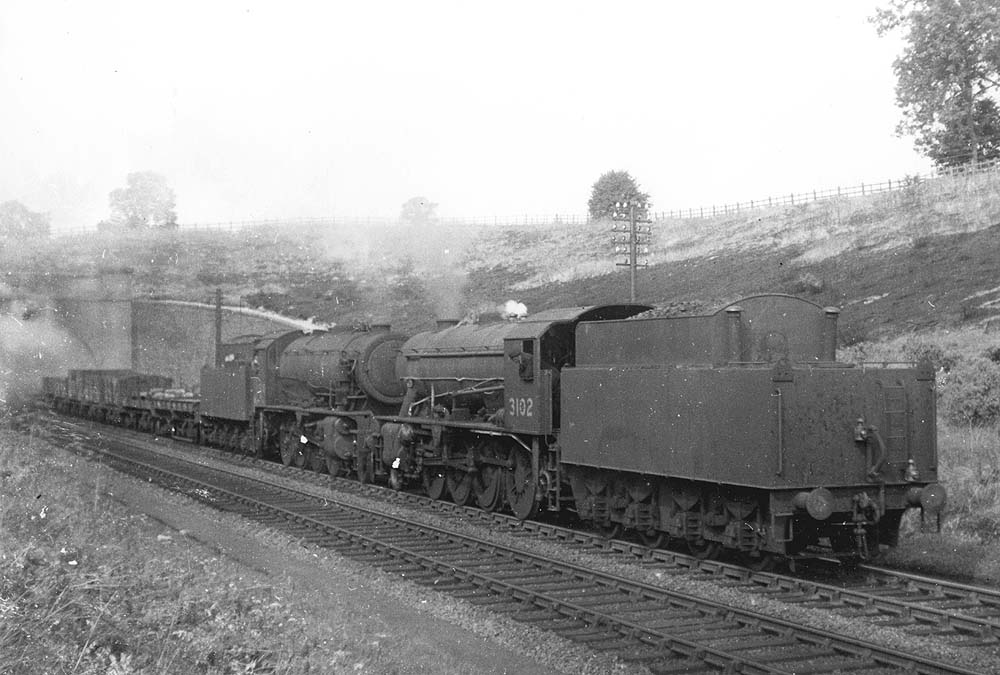 |
|
LNER Route: Leicester to Marylebone
Catesby Tunnel: gcct1
 |
A pair of ex-WD 2-8-0 LNER Class O7s, No 3102 and No 3084,
are seen leaving Catesby Tunnel on a down goods train on 30th August 1947.
Built by the Vulcan Foundry in August 1943 LNER No 3102 was initially loaned to
the GWR before being loaned to the LNER from where it passed into British
Railways ownership as No 90102 which it retained until December 1965 when it
was withdrawn from 40E Colwick shed. Classmate No 3084 was built by the North
British Locomotive Company in September 1944 and was loaned to the LNER in
December 1945 when it was allocated its LNER number. Renumbered by British
Railways as No 90084 the locomotive remained in service until June 1965 when it
was withdrawn from 41E Barrow Hill shed in Staveley. The class was a heavy
freight steam locomotive that was introduced in 1943 for war service. A total
of 935 were built, making this the most-produced British class of steam
locomotives. Based on the LMS Class 8F, which until that point had been the
government's standard design, various modifications were made by RA Riddles to
the 8F design including a boiler of simpler construction which was parallel
rather than tapered and a round-topped firebox rather than a Belpaire firebox.
The firebox was made of steel rather than the rarer and more expensive copper.
The North British Locomotive Company of Glasgow built 545 and the Vulcan
Foundry of Newton-le-Willows built 390.
The North British Locomotive Company also built a larger
2-10-0 version. Most saw service with the British Army in mainland Europe after
D-Day. After the end of the conflict, the War Department disposed of 930
locomotives (Two engines being retained by the War Department and three being
scrapped). After the Second World War, 200 were sold to the LNER, who
classified them as "Class O7" and numbered them 3000–3199. In 1948, 533
more were purchased by the British Transport Commission. With the creation of
British Railways, the 733 locomotives were renumbered into the 90000–90732
series. Only one of these, No. 90732, was named, becoming Vulcan after the
Vulcan Foundry where many of the locomotives were built. In 1946, 12 were
exported to the British colony of Hong Kong to work the Kowloon-Canton Railway.
Six were scrapped in 1956, but the final two survived until September 1962. The
other 184 locomotives remained in mainland Europe, mostly working in and around
the Netherlands for Nederlandse Spoorwegen. Finally, one went to the USATC in
an exchange for an USATC S160 Class locomotive in the Postwar exchange of WD
and USATC locomotives. One WD 2-8-0 has survived. Vulcan Foundry works No. 5200
was repatriated from Sweden to the Keighley and Worth Valley Railway. It was SJ
number 1931. It was overhauled to its original condition, finished in 2007,
which involved building a new cab and tender, become BR "No. 90733". After test
runs, 90733 ran its first passenger train on Monday 23 July 2007.
 back back

|
